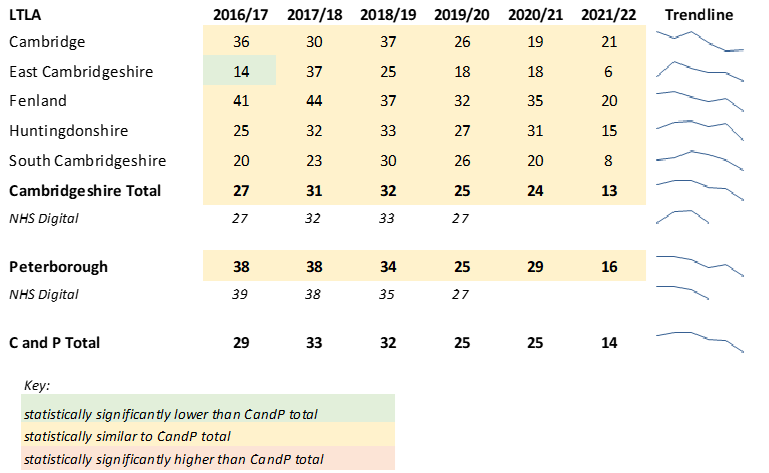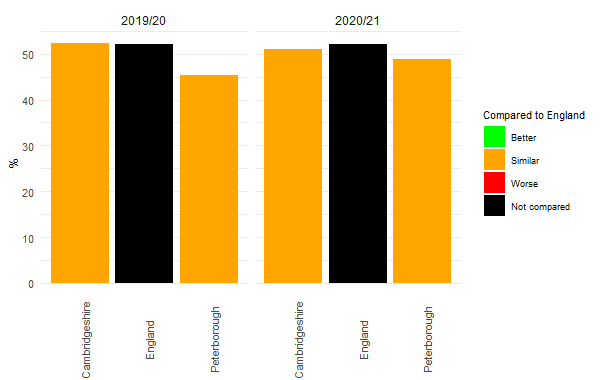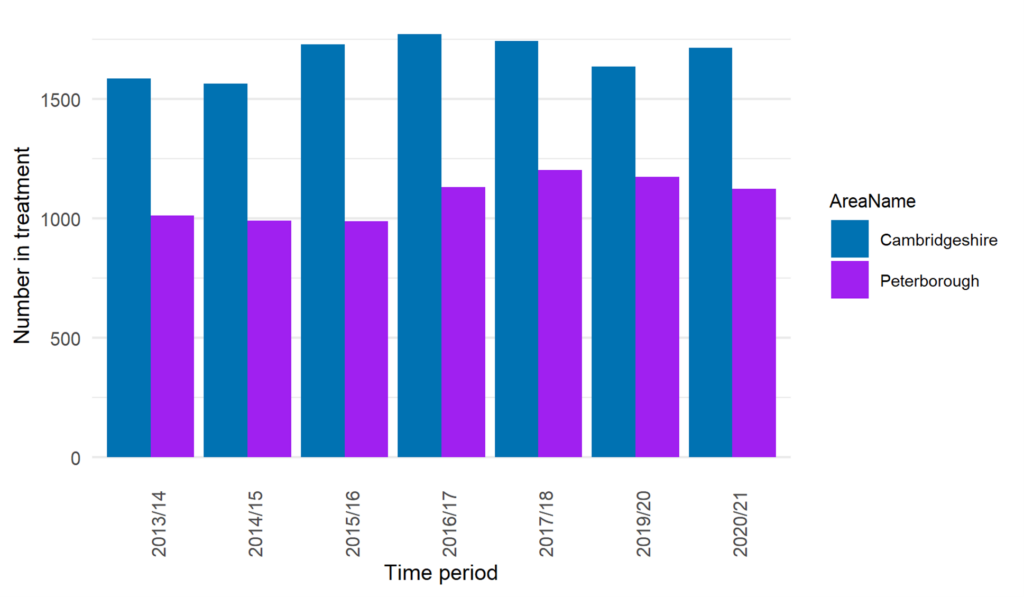Drug use
Note on terminology: drug use includes taking illegal drugs and the consumption of controlled prescription drugs, such as benzodiazepines, without a prescription (Public Health England, 2019a).
- An estimated 1 in 11 adults aged 16 to 59 years had taken a drug in the last year, which increases to 1 in 5 16- to 24-year-olds (Office for National Statistics, 2020b).
- 18- to 44-year-olds who have harmful levels of alcohol use and use psychoactive substances have 18 times higher mortality than their peers (Zhu et al., 2020).
- A literature review shows that the people most at risk of developing drug use are those ‘at the margins of society’ (people who are socially and economically marginalised); and there is a strong correlation between deprivation and drug use (Shaw & Egan, 2007).
- There are close links between drug use and crime: for example, it has been estimated that almost half of all acquisitive offences (stealing) are committed by regular heroin/crack cocaine users (Richards, 2020).
- Substance and alcohol consumption increased over COVID-19, as coping mechanisms for deteriorating mental health (Office for Health Improvement and Disparities, 2022a).What is the local picture?
What is the local picture?
The rate of drug-related deaths is substantially below the national average and has decreased in recent years in C & P. The rate in each district of C & P is similar to that of the C & P average.

Figure 116: Directly age standardised rate of admissions for poisoning by drug use. Data source: Fingertips
- Rates of hospital admissions for drug poisonings are below the national average in Cambridgeshire in 2021, but above average in Peterborough (Office for Health Improvement and Disparities, 2022a):
- In Cambridgeshire, the rate of admissions was 42.9 per 100,000 (282 admissions).
- In Peterborough, the rate of admissions was 61.7 per 100,000 (125 admissions).
- The national rate of admissions is 50.2 per 100,000.
- The proportion of people using opiates and/or crack cocaine in Cambridgeshire and Peterborough who are not in treatment was similar to the national average in 2019/20 and 2020/21 (Office for Health Improvement and Disparities, 2023).
- The proportion of people not in treatment in Peterborough increased to 49% in 2020/21 from 45% in the previous year.

Figure 117: Proportion of people using opiates and/or crack cocaine not in treatment in Cambridgeshire and Peterborough. Data source: (Office for Health Improvement and Disparities, 2023)
There were 1,125 people who received treatment at a specialist drug use service in Cambridgeshire and Peterborough in 2020/21, a similar level to 1,174 in the previous year (Office for Health Improvement and Disparities, 2022a).

Figure 118: Number of people in treatment at specialist drug use services in Cambridgeshire and Peterborough. Data source: (Office for Health Improvement and Disparities, 2022a)
Additional resources
- The local data pack gives an overview of key data and trends
- Cambridgeshire and Peterborough Drug and Alcohol Needs Assessment 2023
- Cambridgeshire and Peterborough-Drugs and Alcohol Priorities (2022-2027)
- The experiences of local service users, told in their own words
- Practice standards for young people with substance misuse problems
References
Full list of references is included at the end of this chapter.
